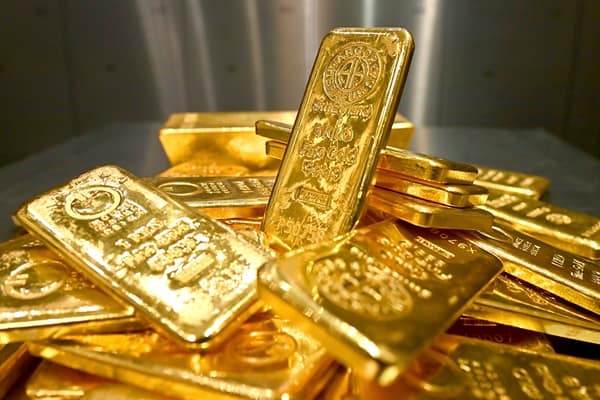Gold rose close to $3,720 during early Monday trading, driven by the Federal Reserve’s 25 basis point rate cut in September, the first since the beginning of 2025.
Although this move was widely expected, its impact on markets was profound, especially amid growing concerns about weakness in the U.S. labour market and slowing employment.
In my view, this decision marks a turning point in the monetary policy cycle, as the Fed balances the risks of persistent inflation on one hand and recession with job losses on the other.
In this context, gold remains a primary beneficiary as a hedge in an environment dominated by uncertainty.
However, Jerome Powell’s remarks revealed a degree of caution that cannot be overlooked. While he confirmed that the cut was aimed at “risk management,” he also stressed that future decisions will be taken “meeting by meeting,” indicating that the Fed does not intend to move quickly into an aggressive easing cycle as some investors believe.
I see this dual message placing markets in a complex equation: gold gains support from the rate cut, but faces counter pressure from a potentially stronger dollar if traders interpret Powell’s stance as more hawkish than expected. This fragile balance explains the current price volatility.
Geopolitical developments represent another crucial dimension. Russia’s heavy drone and missile strikes, combined with escalating tensions in Eastern Europe and the Middle East, have reinforced gold’s traditional role as a haven. Historically, rising geopolitical risks increase demand for the yellow metal, especially when coupled with looser monetary policies. In my assessment, this factor will remain a key driver supporting gold in the short and medium term, creating a solid floor that keeps it close to its recent historical highs.
That said, the resurgence of the U.S. dollar in recent days cannot be ignored. The dollar’s rise to its highest level since July 2022 reflects market expectations that the Fed will not allow inflation to spiral out of control. As is well known, a stronger dollar reduces investor appetite for gold, since it is priced in dollars and becomes more expensive for holders of other currencies. I believe this factor will act as a cap on any sharp upside moves in gold in the near term, making rallies more cautious and less sustainable.
On the other hand, market bets point to a more optimistic scenario for rate cuts than the Fed has officially indicated. Expectations suggest that short-term rates could fall below 3% by 2026, opening the door for a prolonged bullish cycle in gold if realized. I find this outlook overly optimistic, as inflation risks remain and the Fed retains the ability to reverse course if necessary. Nevertheless, the scenario remains on the table and is worth close monitoring.
Global markets are also awaiting political and trade-related decisions that could change the game. The Supreme Court case regarding the legality of tariffs imposed by former President Trump adds a fresh layer of uncertainty, especially since those tariffs remain in effect during the appeals process and could weigh on global trade. In my view, this trade and geopolitical risk environment pushes investors toward hedging tools, with gold at the forefront, reinforcing its position despite temporary headwinds.
The gold outlook cannot be separated from NATO’s moves and mounting security risks in Eastern Europe. The interception of three Russian fighter jets over Estonia is a clear message that escalation could broaden. Such developments support my perspective that gold will remain in focus, not only as a store of value but as a strategic hedge against events whose trajectory is hard to predict.
In the near term, I expect gold to remain volatile between strong support around $3,650 and firm resistance near $3,750, with the potential to test higher levels if geopolitical tensions persist or if the Fed’s communications turn more dovish. Conversely, any negative surprises from inflation data or unexpected dollar strength could drive the metal lower. Thus, I see investor behaviour remaining cautious and risk-management oriented rather than a rush into long-term bullish positions at this stage.
In conclusion, gold today stands at a sensitive crossroads, where Fed policy decisions, dollar strength, and geopolitical risks intersect. In my opinion, the most likely scenario is for gold to stay near its historical highs with a gradual upward bias, supported by easing monetary policies and ongoing geopolitical risks. However, reaching new sustainable highs will require greater clarity on the U.S. inflation trajectory and confirmation of a broader rate-cutting cycle than the Fed is currently signalling. Until then, gold will remain in a tug-of-war, accurately reflecting the uncertainty and anxiety dominating the global economy.
Technical analysis of Gold ( XAUUSD ) prices
Gold is trading in a strong uptrend on the 4-hour timeframe, with price successfully breaking through previous key levels and consolidating above the 3,678 zone, reflecting sustained buyer strength. Despite this bullish momentum, the approach toward the major resistance area near 3,720 raises the likelihood of a profit-taking phase or a minor correction before any continuation of the upward move.






Leave a Comment